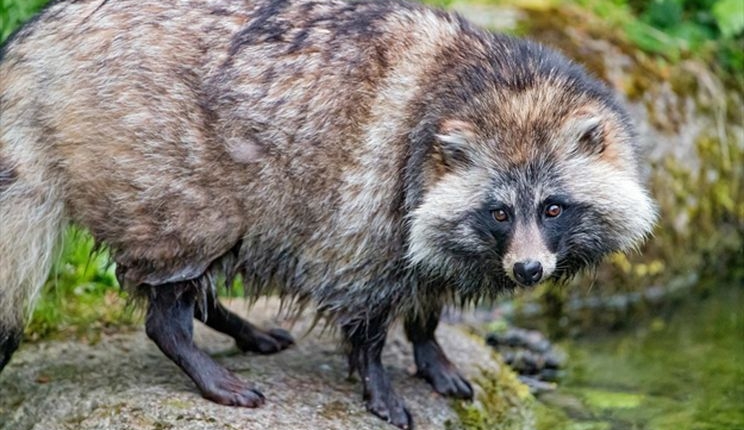International researchers have been attempting to discover the origin of the coronavirus pandemic for the past three years, and missing Chinese data has made their task more difficult. The World Health Organization (WHO) called out Chinese officials on their withholding of samples that could provide clues to the virus’s origins. The samples were taken from the Huanan Seafood Wholesale Market in Wuhan, where the virus may have made the jump to humans from raccoon dogs sold there. Data from these samples was briefly made available to international researchers earlier this year but is now missing. While some researchers downloaded the data, it is no longer accessible, preventing them from performing their own analyses. The missing data from the Huanan market may provide crucial clues to understanding the coronavirus’s origins and may help in mitigating future pandemics.
International researchers have been investigating the origin of the coronavirus pandemic for the past three years. The task has been made more difficult due to the lack of transparency from Chinese officials regarding the data of the samples taken three years ago at the Huanan Seafood Wholesale Market in Wuhan. The samples, taken in January 2020, could lend support to the hypothesis that the pandemic was caused by the SARS-CoV-2 virus originating from raccoon dogs sold at the Huanan market.
World Health Organization (WHO) director-general Tedros Adhanom Ghebreyesus has called out Chinese officials over their withholding of data and demanded answers as to why the data, briefly made available to international researchers earlier this year, is now missing. Tedros emphasized that sharing data and conducting necessary investigations remain both a moral and scientific imperative in understanding how the pandemic began.
What is a Raccoon Dog?
Native to East Asia, the raccoon dog is not exactly a raccoon or a dog, but rather a member of the Canidae family and more closely related to foxes. They are about the same size as a large fox, less than a meter in length, with short, stubby legs that give them the shape of a large raccoon. They are identifiable by the black, raccoon-like markings on their faces.
Studies have shown that raccoon dogs are susceptible to and able to transmit SARS-CoV-2, which makes them a potential source of the virus. The samples taken at the Huanan market in Wuhan could provide crucial evidence to support the hypothesis that the virus originated from raccoon dogs sold at the market.
Missing Chinese Samples
Data related to samples taken at the Huanan market in Wuhan in 2020 was posted in late January on the Global Initiative on Sharing Avian Influenza Data (GISAID) database, an international clearinghouse for sharing data on influenza and the coronavirus. The data was posted in conjunction with a research paper by scientists from the Chinese Center for Disease Control and Prevention. However, the data is missing, and Chinese officials have been criticized for their lack of transparency regarding the samples.
In conclusion, transparency and data sharing are essential in understanding the origin of the coronavirus pandemic. The missing Chinese samples could provide crucial evidence in determining the source of the virus and prevent future pandemics.
Importance of Missing Data from Huanan Market Samples in Understanding COVID-19 Origins
Studying samples from the Huanan market was important in determining the origins of the coronavirus SARS-CoV-2 and how it was initially transmitted to humans. In January 2020, 1,380 samples were collected from the market, of which 73 tested positive for SARS-CoV-2. However, the data disappeared from GISAID shortly after it was posted online.
What Happened to the Data?
The data from the January 2020 samples was posted on GISAID in late January 2023, before the Chinese research was released. However, the data disappeared from GISAID shortly after it was downloaded by researchers from different countries. The Chinese research team stated that the data had been restricted to allow updates pending the release of the updated research paper.
Why is the Missing Data Concerning?
For three years, researchers outside of China had been trying to determine the origin of the pandemic with one hand tied behind their backs. The missing data from samples taken at Huanan market, where a number of early COVID-19 cases had connections, could have been crucial in solving the puzzle of the pandemic’s origin. Without all the pieces of the puzzle, researchers were not sure what they were building.
Mike Ryan, executive director of WHO’s Health Emergencies Programme, said that understanding the coronavirus origin mystery was like trying to solve a jigsaw puzzle without ever seeing the actual picture of the finished product on the box cover. The missing data from the samples taken at the Huanan market could be the missing puzzle pieces that could help researchers build a complete picture of the origins of the pandemic.
In conclusion, understanding the origins of the coronavirus pandemic is crucial to preventing future pandemics. The missing data from the Huanan market samples could provide crucial evidence to researchers trying to determine the source of the virus and prevent future outbreaks. The data must be made available to the global research community to ensure that the puzzle of the pandemic’s origin is solved.
The Significance of Inaccessible Data on Huanan Market Samples in COVID-19 Origins Study
Data from the Huanan market samples that could have been crucial in determining the origin of the pandemic is not readily available to the international community. The Chinese data, which was uploaded to GISAID in late January, was taken down shortly thereafter, making it inaccessible to scientists trying to perform their own analyses on the Huanan market samples. The lack of access to the data has made it difficult for researchers to remove different hypotheses regarding the origins of the virus.
What Does the Data Tell Us?
The new data from the Huanan market samples showed that animals, including raccoon dogs, were sold at the market, and that some of those animals tested positive for SARS-CoV-2. The data also identified DNA evidence of the raccoon dog, an animal previously known to be susceptible to SARS-CoV-2.
Although the data is consistent with the idea that the virus jumped from the raccoon dog to humans at the Huanan market, the evidence is still circumstantial. Scientists do not know if the virus jumped from raccoon dogs to humans, or if raccoon dogs were infected by another animal or a human. The data provides more leads for scientists to follow and helps narrow down hypotheses.
Where Do Those Clues Lead Scientists?
The WHO has been asking Chinese scientists to follow the path upstream and trace the origins of animals at the Huanan market back to their farms. This will help researchers understand how the animals came to be in the market, whether they were infected when they got there, or whether they were infected afterward.
Understanding the origins of the pandemic is important in preventing future outbreaks. It is crucial that data from the Huanan market samples is made available to the global research community to ensure that hypotheses regarding the origins of the virus are removed. The data from the samples will give researchers clues to help them understand what might have happened and narrow down the search for the source of the virus.
Studying the origin of the pandemic: tracing the animals
Scientists are eager to study the animals in the Wuhan market and trace them back to their source farms. By doing so, they hope to understand how the animals came to be in the Huanan market and whether they were infected when they arrived there. Furthermore, the WHO has repeatedly requested studies to be conducted in other markets in Wuhan and in Hubei and across China to trace the animals back to their source farms. If they can get this data and analyze it collaboratively, scientists may be one step closer to solving the mystery of the origin of the pandemic and preventing future ones.
Don’t miss interesting posts on Famousbio









